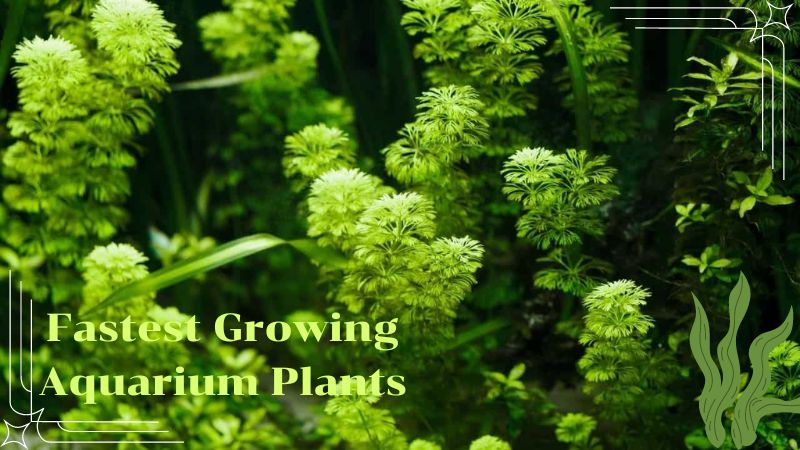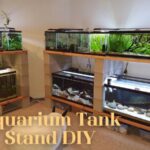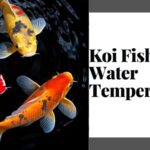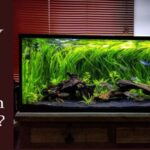A thriving freshwater aquarium is a beautiful and balanced ecosystem. Live plants play a vital role in this balance, not only by providing oxygen and shelter for fish but also by helping to control algae growth. However, some aquarium plants grow much faster than others. In this article, Tropical Fish Haven will discuss the 10 fastest growing aquarium plants. These plants can help control algae, stabilize water conditions, and provide shelter for fish in your freshwater tank.
Benefits of fast-growing plants in your aquarium
Aquatic plants in your aquarium do more than just enhance their appearance—they actively combat algae growth in planted tanks. Having a higher density of plants can effectively prevent algae outbreaks by competing with them for light and nutrients. Rapidly growing plants excel in this competition, outperforming algae by absorbing excess nutrients such as nitrate and phosphate, crucial for algae growth.
With fewer algae outbreaks to contend with, you’ll spend less time on maintenance and more time enjoying the clear, beautiful view of your aquarium!
Fast-growing aquatic plants provide more than just algae control in your fish tank. They enhance water quality by absorbing harmful compounds such as ammonia and nitrite, which stabilizes water chemistry and reduces the need for frequent maintenance to manage toxic spikes. Moreover, live aquatic plants contribute to improved water quality by consuming carbon dioxide and releasing oxygen.
Furthermore, these plants create a natural habitat conducive to fish breeding. They offer secure spaces for adult fish to lay eggs and provide shelter for fry, promoting the growth of essential microorganisms that serve as vital food sources for newly hatched fish.
Fastest growing aquarium plants
Salvinia Natans
Salvinia Natans, commonly known as Floating Fern, is a fast-growing floating plant characterized by distinctive nickel-sized leaves and a fuzzy texture. Unlike typical floating plants, it lacks long trailing roots and instead forms dense mats on the water’s surface. These mats effectively block light penetration into the water column.
Its vigorous growth offers shelter for aquarium inhabitants while also competing effectively with algae for light. This natural competition reduces the likelihood of algae blooms and fosters a harmonious, balanced environment in your aquarium.
Red Root Floaters
Red Root Floaters are highly favored in aquariums for their distinctive blood-red roots and undersides. When exposed to intense lighting, their leaves can adopt a vibrant red hue, adding a visually captivating element to your tank. Beyond their aesthetic appeal, these plants serve as a formidable defense against algae.
Red Root Floaters reproduce rapidly, forming a dense canopy on the water’s surface that shades lower tank levels, thereby depriving algae of essential light. Their lengthy roots excel in absorbing surplus nutrients and harmful substances from the water, effectively curbing algae proliferation and fostering a more robust ecosystem.
Java Moss
Java Moss is a beloved choice in the aquarium community due to its low-maintenance requirements and adaptability. It thrives without the necessity of CO2 supplementation or intense lighting, although bright lights are beneficial for achieving dense growth.
This rapid-growing moss develops dense clusters and mats that serve as excellent hiding places for fry and breeding fish. Its fine fronds are perfect for species that scatter their eggs, providing an ideal surface for attachment. Moreover, its delicate branched structures offer effective camouflage, helping fish evade potential predators.
Rotala Narrow Leaf Sp. Red
Rotala Narrow Leaf Sp. Red is a sought-after stem plant distinguished by its slender leaves and striking red coloration. Known for its rapid growth, especially in environments with ample light and nutrients, this plant can grow 1-2 inches per week once established. Regular trimming is essential to manage its growth and prevent overshadowing of lower sections.
Propagation follows the standard method for Rotala species and other aquatic stem plants. Simply cut along the stem and replant into aquasoil to propagate.
Egeria Densa
Egeria Densa, commonly known as Anacharis or Elodea, is a rapid-growing leafy stem plant renowned for its ability to absorb surplus nutrients from the water, thereby depriving algae of essential resources and preventing potential outbreaks. This makes it an excellent choice for establishing and maintaining stability in a new aquarium. Moreover, its dense growth pattern offers valuable shade and shelter for all aquarium inhabitants.
Hygrophila Difformis
Hygrophila Difformis, also known as Water Wisteria, is highly favored among aquarists for its rapid growth and easy care. Despite its potential to grow tall, regular pruning encourages a compact, low-profile appearance. Its fast growth rate facilitates straightforward propagation through stem cuttings and replanting, making it particularly appealing for aquarists seeking to quickly enhance the volume and density of plants in their tanks.
Bacopa Caroliniana
Bacopa Caroliniana is a striking addition to planted aquariums, known for its thick green leaves and upright growth. While typically green, new growth can take on a reddish hue with added iron and other nutrients. Although Bacopa variants thrive with CO2 supplementation, bright lighting, and ample nutrients, they remain robust and adaptable even without these enhancements, making them a resilient choice for aquarium enthusiasts.
Hydrocotyle Leucocephala
Hydrocotyle Leucocephala, commonly called Brazilian Pennywort, is renowned for its fast growth and distinctive round leaves resembling clovers. This plant is prized for its easy care and ability to swiftly absorb excess nutrients from the water, making it effective in combating algae.
Without regular trimming, Brazilian Pennywort can outgrow other plants by competing for light. To maintain a tidy, low-growing carpet in the foreground, it’s essential to trim new growth frequently and ensure adequate lighting, possibly supplemented with CO2.
Vallisneria Gigantea Rubra
Vallisneria Gigantea Rubra is a notable variant in the Vallisneria genus, characterized by its long leaves that may take on a reddish tint. Positioned as a background plant in freshwater aquariums, it displays vigorous and towering growth, effectively competing with algae by consuming substantial nutrients. Vals plants propagate via side shoots and can rapidly reach the full height of your aquarium. Their rapid growth and dense foliage establish a luxuriant habitat, providing shade and fostering a stable, algae-free environment for all aquarium inhabitants.
Pearl Weed
Pearl Weed, also known as Hemianthus Micranthemoides, is a highly sought-after fast-growing plant that forms dense clusters of low-lying stems, ideal for carpeting aquarium floors. Its rapid growth and dense foliage effectively outcompete algae, making it a valuable addition to any tank.
As a foreground plant, Pearl Weed requires regular trimming to prevent it from overtaking your aquarium. Under bright lighting and with CO2 supplementation, it spreads horizontally to create a lush carpet rather than growing vertically. This spreading occurs swiftly, allowing Pearl Weed to carpet large areas of substrate in a short time.
Furthermore, Pearl Weed excels at absorbing harmful ammonia and nitrate from the water, thereby helping to prevent algae outbreaks and maintain water quality.
Conclusion
Fast-growing aquarium plants offer a wealth of benefits for your underwater world. By incorporating these enthusiastic growers into your tank, you can create a beautiful and healthy environment for your fish while helping to keep algae growth under control. Just remember to trim them regularly to maintain their desired size and shape and prevent them from taking over your tank.





